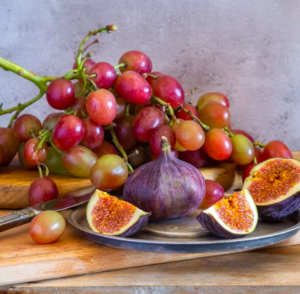Grapes and figs are coming into season, and soon they will be more abundant, whether you’re in the city or the countryside. These nutrient-rich foods, essential for the body, should be part of our daily diet as long as they are consumed in moderation and combined with other foods rich in fats and proteins.
Do Diabetics Have to Deprive Themselves?
The recommendation that diabetics should avoid fruit or only eat sour apples is outdated. Diabetics are actually encouraged to consume fruits and vegetables because they contain plant fibers that help regulate blood sugar levels.
The key to consuming fruits for diabetics is the quantity and the combination with other foods. For example, type 1 diabetics who take insulin must be trained to match their insulin dosage with the quantity of fruit they consume. Type 2 diabetics should combine fruit with foods containing fat or protein to prevent sudden sugar spikes. Therefore, grapes and figs can be combined with cheese or nuts, as suggested by nutritionist Panagiotis Zisis.
Quantity and Combination with Proteins and Fats
A portion of carbohydrates behaves as fiber, known as “resistant starch,” meaning it does not break down like regular “fruit sugar.” It passes through our intestine intact, benefiting our intestinal microbiome as a prebiotic. Therefore, diabetics can eat any fruit they want, provided the quantity fits in a teacup or is the size of their fist—approximately 20 grapes or 15 grapes of the strawberry variety. For figs, 2 to 3 figs are allowed, depending on their size.
Always follow the “fruit + protein + fat” rule and choose slightly unripe fruits, which have a lower Glycemic Index. “I cook figs with grilled brisket or liver and balsamic with stevia, or chicken with grapes,” says Dr. Nikos Georgiadis, a specialist in cardio-metabolic diseases.
Ask me anything
Explore related questions





